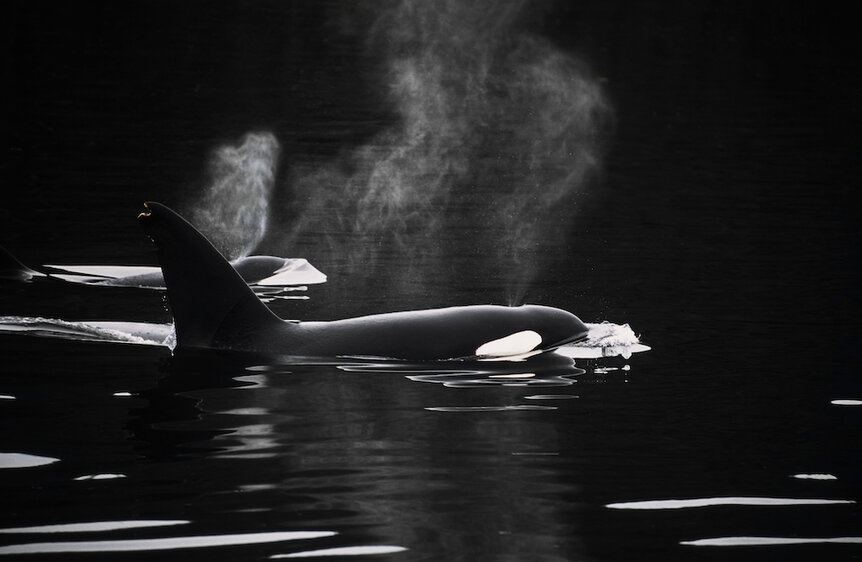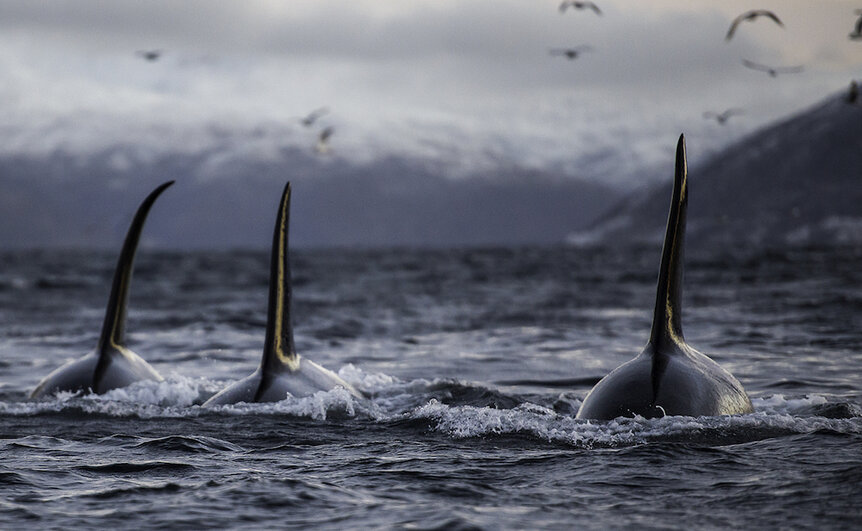Create a free profile to get unlimited access to exclusive videos, sweepstakes, and more!
A South African Killer Whale Took on a Great White Shark One-on-One and Won
The only animal with the guts to take on a great white shark single handed ... or ... single finned.
Sharks have been ruling the seas for 450 million years, but they only really hit their stride in 1975, at least in terms of public interest. Before that, sharks were largely the stuff of sailor’s stories and rarely entered into the thoughts of ordinary people. Then Steven Spielberg adapted Peter Benchley’s shark-themed novel Jaws into one of the most celebrated summer blockbusters of all time and sharks, great white sharks in particular, became synonymous with death.
In real life, sharks are complex creatures with relationships, and they almost never attack people, even when it would be easy. The shark in Jaws exhibits none of that; it is single-minded in its pursuit of human-shaped morsels along the fictional Amity Island coast. After a couple of people wind up shark food, police chief Martin Brody (Roy Scheider) wages an all-out war against the killer shark, with the help of marine biologist Matt Hooper (Richard Dreyfuss) and grizzled boat captain Quin (Robert Shaw).
They win in the end, but at great cost, and all of it could have been avoided if they would have had just one properly motivated orca at their disposal. Recently, researchers in South Africa observed a single orca killing a great white shark for the first time ever. The sighting was published in the African Journal of Marine Science.
For More on Sharks:
Drone Footage Snaps Up the First Known Baby Photos of a Great White Shark (Probably)
Remember That Half-Eaten Great White Shark? DNA Evidence Identifies the Killer (Whale)
Great White Sharks Have a Mysterious Second Life in the Ocean's Twilight Zone
Orca Kills Great White Shark, One-on-One
The study hinges on a collection of photos and video footage captured by researchers and tourists aboard two vessels in South Africa’s Mossel Bay. Orcas there have been documented hunting and eating white sharks in the past, but always in pairs or groups. Every documented dust up between an orca and a white shark prior to this one involved between two and six individuals working together.
Usually, one killer whale approaches and the shark begins circling in response. The other whale, or whales, block off the shark’s escape route to the open ocean and together they wear it down. Previously recorded hunting events lasted upwards of two hours. Not only is this the first documented case of a single killer whale hunting a white shark, it was also particularly efficient. The entire event, from initiation to bloody climax, happened in about two minutes.
There’s no predatory attack in the animal kingdom that we’d sign up for, but orca attacks on white sharks are especially brutal. They don’t eat the entire shark, instead they seek out the nutrient-rich liver and discard the rest. In white sharks, the liver makes up roughly a third of the body weight and orcas preferentially seek them out, leaving the rest of an eviscerated shark corpse behind. The attacks are so effective at striking fear into sharks that they have been documented fleeing the area once killer whales move in and start reaping.
On June 18, 2023, an orca duo known as Port and Starboard – so-named for the opposing directions of their dorsal fin curls – were seen by observers on the shore. Researchers hopped in an inflatable vessel and launched in pursuit. Once in the water, they noted an “apparent slick” on the surface and the distinct oily smell of shark liver in the air. Port and Starboard then split up, putting a distance of more than 100 meters between them. Researchers followed Port first, before turning back to check in on Starboard. That’s when a 2.5-meter white shark appeared.
Starboard gripped the shark's pectoral fin in his teeth and yanked. Removal of the fin immobilized the shark, then Starboard opened it up to remove and consume the liver. All of that happened in full view of researchers. Starboard’s bestie stayed about 100 meters away and didn’t get involved, despite the duo having hunted together in the past.
The day after the attack, a disemboweled shark carcass washed up at Mossel Bay, about a kilometer from where the attack was witnessed. Researchers said it’s likely the shark’s subadult size contributed to the attack, making it easier picking than its older and larger peers. When taking down larger prey like the famed killer shark from Jaws, it’s likely that cooperative hunting is required, or at least preferred. After all, Chief Brody couldn’t have done it without Quint and Hooper at his side.
Revisit the story that started our fearful love affair with sharks in Jaws, available from Universal Pictures.
































